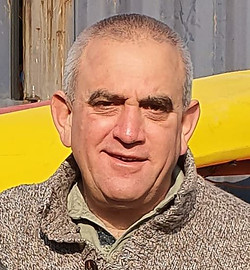
Weed Research Team
Newe Yaar Research Center, Agricultural Research Organization
Israel


Weed Research Team at a Glance
Welcome to the Israeli Weed Science Group located at Newe Yaar Research Center, Agricultural Research Organization (ARO), Volcani Center, Israel.
Our group focuses on applicative and fundamental research directly related to all aspects of weed science at all levels of agricultural systems, adopting the concept of sustainable agriculture. Our activities are targeted towards the development of knowledge over a broad range, including weed biology, weed ecology, and modeling of weed development and distribution. We also deal with parasitic biology and management of weeds and that of, invasive weed species, integrated weed management systems, transgenic crop tolerance, precision agriculture and site-specific weed management. In addition, we are concerned with remote sensing of weeds, mechanical and physical weed management and herbicide resistance.
Our Unit supports research and extension projects designed to address challenges of weedy plants that pose threats to agricultural production systems through minimizing environmental and human health hazards resulting from weed management practices.
We welcome national and international research activities and collaboration of all kind related to weed science.
News
Team Members

Dr. Ran Lati
Researcher
Email: ranl@volcani.agri.gov.il


Dr. Evgenia Dor
Researcher
Email: evgeniad@volcani.agri.gov.il

.jpg)
Dr. Radi Aly
Researcher
Recent Publications
Bari, V.K., Abu Nassar, J., Meir, A. and Aly, R. (2020). Knockout of two ATP Binding Cassette protein homologs in tomato by CRISPR-Cas9 targeted mutagenesis provide resistance against plant parasite Phelipanche aegyptiaca. Plant Cell Report (accepted). https://www.biorxiv.org/content/10.1101/871087v2
Aly, R., Bari, V. K., Lati, R., Londner, A., Kocherman, M., Abu-Nassar, J., Taha-Salaime, L., Eizenberg, H. and Lati, R. (2019). Development of specific molecular markers to distinguish and quantify broomrape species in a soil sample. European Journal of Plant Pathology 155:1367–1371.
Dor, E., Plakhine, D., Joel, D.M., Larose, H., Westwood, J.H., Smirnov, E., Ziadna, H. and Hershenhorn, J. (2019). A new race of Orobanche cumana with a wider host range due to changes in seed response to strigolactones. Weed Science. DOI: 10.1017/wsc.2019.73.
Horesh, A., Goldwasser, Y., Igbariya, K., Peleg, Z. and Lati, R. N. (2019). Propane flaming as a new approach to control Mediterranean invasive weeds. Agronomy 9:187.
Horesh, A., Igbariya, K., Peleg, Z. and Lati, R. N. (2019). LPG flaming—A safe post-emergence weed control tool for direct seeded and bulb onion. Agronomy 9:786.
Lati, R., Filin, S., Elnashef, B., Eizenberg, H. (2019). 3-D image-driven morphological crop analysis: A novel method for detection of sunflower broomrape initial subsoil parasitism. Sensors 19:1569.
Blank, L., Birger, N., Eizenberg, H. (2019). Spatial and temporal distribution of Ecballium elaterium in almond orchards. Agronomy 9:751.
Matzrafi M., Brunharo C., Tehranchian P., Hanson B.D. and Jasieniuk M. (2019),
Increased temperatures and elevated CO2 levels reduce the sensitivity of Conyza canadensis and Chenopodium album to glyphosate. Scientific Reports. 9:2228.
Mesgaran M.B., Matzrafi M. and Ohadi S. (2019). Sex lability and dimorphism in diecious Palmer amaranth (Amaranthus palmeri). bioRxiv doi:10.1101/769935.
Galili, S., Hovav, R., Dor, E., Hershenhorn, J., Harel, A., Amir-Segev, O., Bellalou, A., Badani, H., Smirnov, E. and Achdari, G. (2018). The history of chickpea cultivation and breeding in Israel. Israel Journal of Plant Sciences 65:186-194.
Dor, E., Galili, S., Evgeny Smirnov, E., Hacham, Y., Amir, R. and Hershenhorn, J. (2017). The effects of herbicides targeting aromatic and branched chain amino acid biosynthesis support the presence of functional pathways in broomrape. Frontiers in Plant Science doi.org/10.3389/fpls.2017.00707.